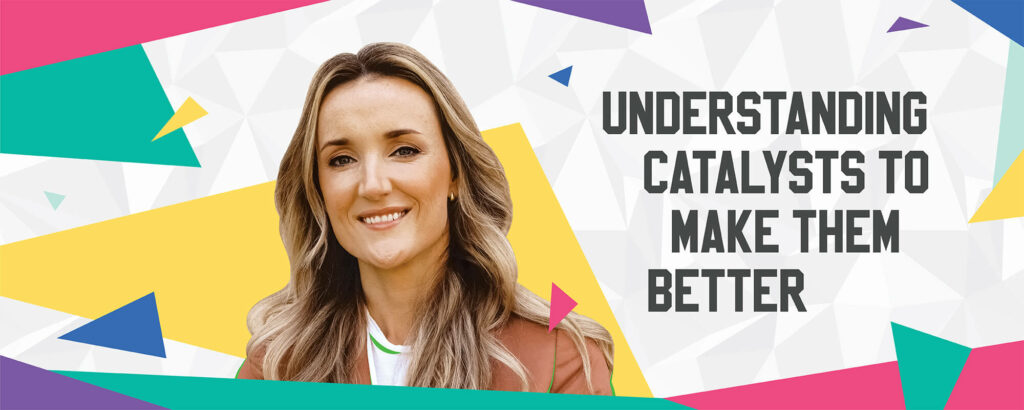
atalysts spur the world’s economy, but they still hold many mysteries. “One-third of global gross domestic product relies on catalysts, and yet do we really understand how they operate under working conditions? Absolutely not,” says Charlotte Vogt, an assistant professor of chemistry at the Technion—Israel Institute of Technology.
Vogt is determined to fill that knowledge gap. Her research reveals the inner workings of catalysts that could tackle climate change by decarbonizing our energy systems and industrial processes, and she’s driven by the urgency of the challenge. “We have to come up with new catalytic systems at record speed, and how are we going to do that if we don’t really understand them?” she says.
Most of the common reactions in the chemical industry involve passing gases or liquids over solid catalysts at high temperatures or pressures. To improve the performance of these heterogeneous catalysts, chemists try to understand the mechanism of the reaction going on at the catalyst’s surface. Traditionally, this approach has involved using spectroscopic and other techniques to study simplified versions of the reaction systems—perhaps focusing on a single facet of a catalyst crystal at extremely low pressure so that just a few reactant molecules adhere to its surface.
Despite the insights they have provided, these model systems are completely different from the conditions of industrial reactions and can give a misleading or incomplete view of how the catalyst works. So Vogt instead studies catalysts in their real-world operating environments, known as operando in chemical parlance, and in real time, which poses enormous experimental challenges.
A catalyst particle can have many different reaction sites that change during the reaction. And the catalyst is surrounded by a blizzard of reactant and product molecules, most of which are not undergoing the reaction in question at any given moment. “You’re sometimes looking for spectroscopic signals that are like a needle in a haystack,” Vogt says. “So we’re developing techniques to elucidate those tiny but important signals and distinguish them from everything that is not important.”
“We have to come up with new catalytic systems at record speed, and how are we going to do that if we don’t really understand them? ”
Charlotte Vogt, professor, Technion—Israel Institute of Technology
Her team studies catalysts using X-rays at synchrotron facilities, for example, or infrared spectrometers in Vogt’s lab. Then the researchers use machine learning and pattern recognition techniques to comb through the terabytes of data. They also design specialist reactors that can operate at realistic conditions while allowing spectroscopists to peer inside the heart of the reaction.
Vogt is applying these techniques to the reactions of small molecules, including carbon dioxide and ammonia, that have a huge global impact. In addition to studying conventional heterogeneous catalysts, she’s also interested in developing operando techniques to study electrocatalytic reactions that produce NH3 or convert CO2 into fuels and other useful products. Deployed at an industrial scale, these reactions could take advantage of the growing availability of renewable electricity.
In 2021, Vogt established her research group at the Technion, where she has joined the new Stewart and Lynda Resnick Sustainability Center for Catalysis. “She mixes a deep knowledge of science with a vision of how to apply it to real-world problems,” says Ilan Marek, the center’s director. “She was a perfect fit.”
Vogt has always understood the power of chemistry to change the world. Her father, Eelco Vogt, was the global R&D director for catalysts at chemical company Albemarle, “so I had a really good role model at home,” Charlotte Vogt says. After undergraduate and master’s degrees at Utrecht University, she stayed on for a PhD with Bert M. Weckhuysen, a leading proponent of operando spectroscopy. “She is very driven, she knows how to organize things, and she has a real passion for science,” Weckhuysen says.
Her PhD research included dissecting the Sabatier reaction, which typically uses a nickel catalyst to convert CO2 and hydrogen into methane and water. Improving the efficiency and selectivity of that process could offer a way to use industrial CO2 emissions as a raw material for storing renewable energy in chemical fuels. Vogt’s spectroscopy work revealed how the nickel catalyst particles’ size and structure affected the reaction and how metal oxide supports beneath the nickel particles influenced the products formed.
Weckhuysen and Eelco Vogt are old friends, so Charlotte Vogt was determined to forestall any suggestions of favoritism and worked hard to establish herself as an independent scientist. “In fact, during my PhD I didn’t talk to my dad about my science. Not one word,” she says.
Now that Vogt has her own lab, though, she’s happy to discuss the trials and tribulations of being an assistant professor with her father and has even collaborated on a paper with him. “He’s an amazing support system to have,” she says.
